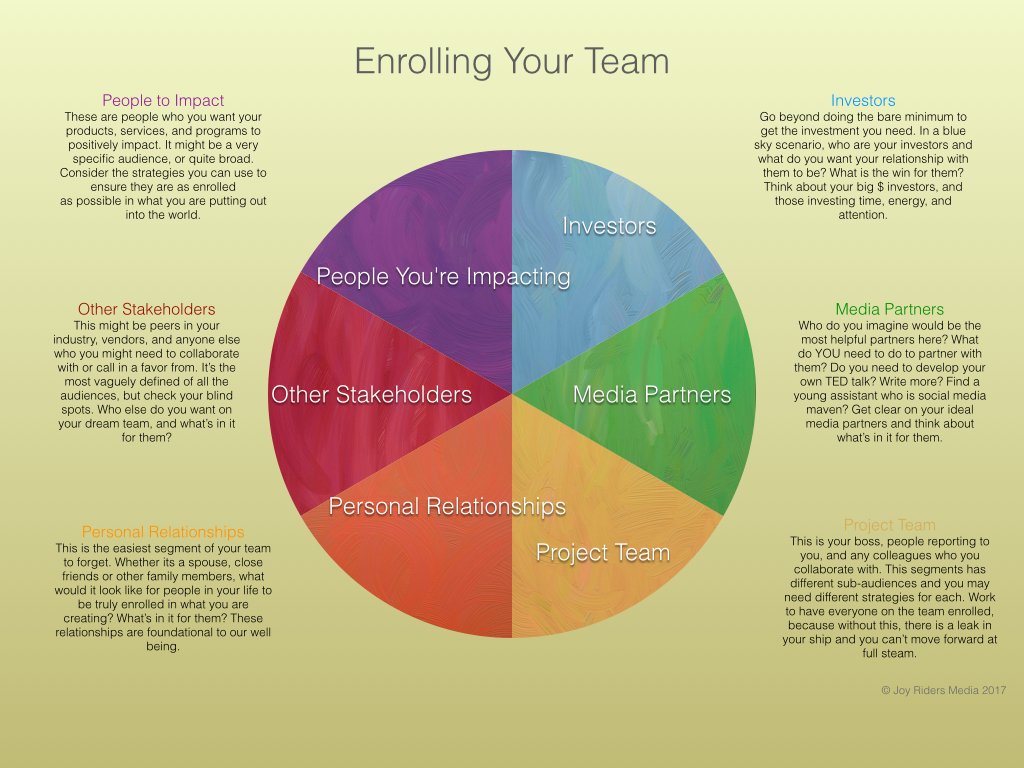 e don’t work in isolation. Our work is intricately connected to a team of people supporting us and a community of people we’re aiming to impact. You need people on your side, from donors and investors, to people working for you and above you, to the communities of people you’re engaging with.
e don’t work in isolation. Our work is intricately connected to a team of people supporting us and a community of people we’re aiming to impact. You need people on your side, from donors and investors, to people working for you and above you, to the communities of people you’re engaging with.
Relationships are the bedrock of your success. To have your company or organization thrive, you need as many people on your side as possible. Here is a two-part strategy for building this foundation of relationships with integrity.
Make the investment opportunities clear
Here’s a frank reality: No one wants to invest in what you’re doing if they can’t see what is in it for themselves. It’s up to you to help them see this, and it’s not always as hard as you might think.
Think of it as creating win-win situations, where having someone on board is a win for you, and where they can see it as a win for themselves. I like to call this enrollment. Enrollment is all about getting someone fully on board and personally invested with what we’re doing. Enrollment is a leadership technique that can be used internally with staff, as well as in external marketing and stakeholder engagement strategies.

Enrollment techniques vary by audience. Certain audiences, such as donors, often want to see a specific return on their investment. They want results deemed sufficient enough for them to feel like their investment was worth it. But others may not need a specific return on investing in you (with their time, energy, or attention). Having your work closely align with one or more of their core values might be enough.
For the different relationships you have in your area of business, get clear on what would have the key players on board with you, and make sure to cater to this in your marketing, in your communications, and in everything that you do. This is a foundation we are building, afterall.
Think holistically about the team of people you want on board. Below is a graphic that shows you different audiences you need to consider. For each, you will want to be clear for yourself and for them on what the “investment opportunity” is. What is the return on investment that will make it a win for the other party? What do they need in order to be enrolled?

You’ve got all these different groups to cater to. Make the opportunities for each of these segments to invest in you as clear as possible!
Go out and build your dream team
Now that you’ve gotten clear on who you need to enroll in being on your side, it’s time to go out and build your team.
Be direct in your enrollment. If you want someone on board, express that. Depending on who it is, a face-to-face conversation might be best. Or if you’re building a following on social media, how can you powerfully enroll people? What is the strategy that will make the investment opportunity the most clear and have those people see what is in it for them?
And if you’re not sure what it would take for a certain person or segment of your audience to be enrolled, ask them! We can have our own idea of what it will take for someone to be on board with us, but this might not align with their reality. Don’t be afraid to directly ask, “What will it take for you to be fully on board with what I’m up to (and support me in this way)?”
After you finish reading this article, I challenge you to take the ideas from here and put them into practice. Make a chart similar to the above, and include your enrollment strategies for each major audience grouping. Be direct in your asks, and remember that the work you’re doing can’t flourish without a team of supporters fully enrolled in what you’re up to.


